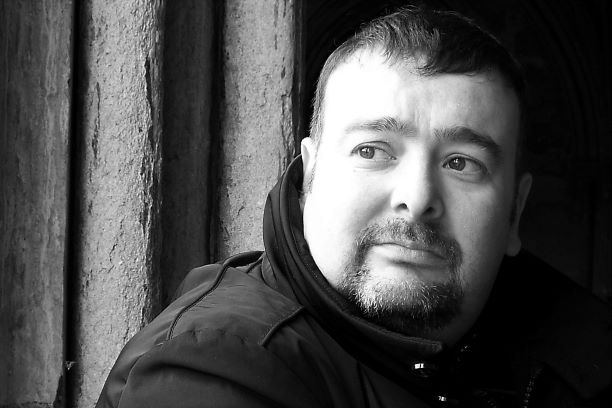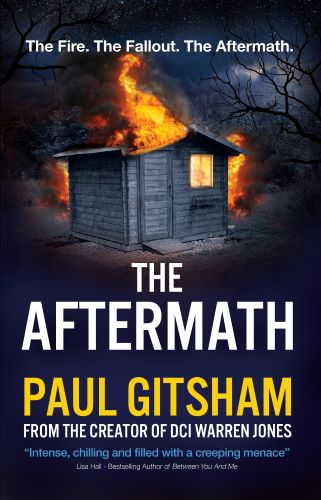A Sense Of Place
Fictional Vs Non-Fictional Locations
None of them exist.
The north Hertfordshire market town of Middlesbury is entirely a product of my imagination.
In this week’s #TuesdayTip, I want to discuss the pros and cons of setting your books in a fictional locale, or telling your tales in a real place.
For me, setting my books in an imaginary town was more a product of necessity than choice, having lived a fairly peripatetic lifestyle for the past quarter-century. After leaving Coventry where I was brought up to attend university, I have rarely lived anywhere for more than a couple of years at a time. I have worked at or attended universities in four different cities (on two continents), have lived in at least seven different counties and about ten different cities. If you think that makes me sound like some metropolitan sophisticate who can set his books in a host of different places, then you’d be wrong.
The problem is that I have never really lived anywhere long enough to absorb the feel of a place. Police officers intimately know their beat and if that beat exists in the real world then those that write them need to know it equally well. Even worse, some of their readers will also know that place and will let the author know if they screw up!
I would dearly love to have set my series in a real town. I greatly admire writers like Ian Rankin or Michael Connelly, whose depictions of Edinburgh and Los Angeles are so vivid one feels as though you are walking alongside Rebus or Bosch. A few weeks ago, I binge-read and reviewed Rachel Lynch’s DI Kelly Porter series. Set in the Lake District, there is no faking Rachel’s intimate knowledge of that part of Cumbria. MW Craven also writes about that area and his knowledge of the county shines through.
Unfortunately, at the time that I started writing the book that would eventually become The Last Straw, I was living in a small north Hertfordshire town chosen purely for its cheap rent and proximity to work. Good road and rail connections meant that my socialising was done in far more interesting places, such as Cambridge. Even were there anything of note in that perfectly pleasant, but desperately bland town, I never had the time to get to know it. Back then I was still a full-time teacher, and my weekends were spent either visiting friends and family in other cities, or installed in the local library trying to become a writer…
Therefore, I decided that Middlesbury had to be fictional.
Tip: if you locate your town geographically in the same place as a real town, then you have some easy anchors. You can keep track of nearby transport links for consistency, Google Maps can calculate realistic travel times to other cities and you can even pinch some of the real location’s demographic information etc if the town is similar to your imagined place.What should you consider?
Advantages of a real place:
Readers love real-world locations. Whether they get a kick out of seeing somewhere they know really well on the page, or they enjoy escaping to somewhere they’ve never been but might one day visit, books intimately associated with a place can do very well. You may even persuade the tourist office to stock a few copies, and libraries and bookstores love a local author, or someone that writes about their hometown.
Furthermore, much of the hard work has been done for you! There are maps to plan your character’s routes, real shops and landmarks that you can photograph to help you when writing a description. There are local legends and documented events that can stimulate your own stories.
The downside:
You need to do your research. Unless you set the book in a fictionalised version of that area (and make that explicit in the book’s disclaimer), any errors that you make WILL be noticed and remarked upon!
Advantages of a fictional place:
Your town, your rules! One of the limitations of wedding your story to a real place is that you are stuck with what that location has to offer. When I wrote The Last Straw, I needed a small, regional university. The real-world location for Middlesbury didn’t have one, and I didn’t want to set it in the academic behemoth a couple of junctions up the M11, so the University of Middle England was born. Easy peasy.
Need a ruined medieval abbey attached to a priest’s retirement home? Check.
A multiplex cinema? Yes.
A housing estate with a half-dozen tower blocks? OK.
A nice open common, that nevertheless has enough trees for somebody to be killed out of sight? Yup, Middlesbury has one of those.
The downside:
Keeping track of it and having to invent so much! I don’t mind a bit of town planning, it can be quite fun, but it is also time consuming.
Tip; You can help yourself by using other places that you know well as a framework. The centre of Middlesbury, which I needed to properly lay out for The Common Enemy, is based on a small town I once lived in. The shop names and other details are different, but as I can picture that town if I close my eyes, I can always visualise Middlesbury if I need to.
Once you’ve written a few in the series, it’s inevitable that you are going to need to start revisiting some of these locations, otherwise your town can become bigger than London!
Tip: Keep a file noting some of the key landmarks. It’ll save you hours of trawling through previous manuscripts to find the correct spelling of the red light district (true story).
Of course you will also need to populate your imaginary town with imaginary businesses that have imaginary names – I wrote a previous article looking at how to name fictional businesses.
So what about a middle ground?
Some authors have taken the approach I use of placing a fictional town in a real location much further. Peter Robinson sets his DI Banks series in the Yorkshire Dales, referencing and even visiting real places, but seamlessly switching to fictional locales whenever he needs to. On the other hand, were one to use Kate Rhodes’ excellent Alice Quentin series as a map of London it would probably end in disaster, with some significant cartographical liberties taken in the name of telling a good story (it’s probably worth including a disclaimer if you choose to do this). Colin Dexter famously expanded the number of colleges that make up Oxford University, so that he can give Morse a really meaty case without sullying the name of such august institutions.
So where do you stand? Do you want to set your books in a real place with all of its history and architecture and character to draw upon? Or do you want the freedom of a blank canvas and the opportunity to invent somewhere perfect for your story?
Feel free to share your thoughts either here or on social media.
Until next time, take care.
Paul




















